Dear readers, do you know that aside from Subic Beach, there is another pink beach in Sorsogon? Yes, Sorsogon is blessed not only with one, but with two pink beaches!
Allow Tita S to tell you 10 facts about Tikling Beach.
1.Tikling Island is located in the municipality1 of Matnog2, in the province3 of Sorsogon4, Bicol5 Region6, in the Luzon7 group of islands, Philippines.
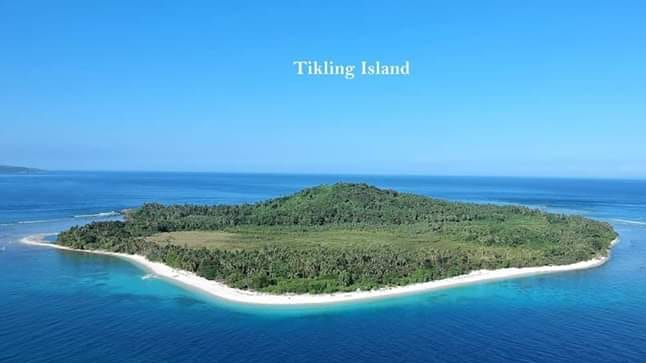
Photo source: https://www.facebook.com/106794194278473/photos/a.106794660945093/106794617611764
2. Its pristine Tikling Beach may look creamy white from afar but when you actually walk along the beach, you will notice and appreciate the tinge of pink in the sand due to the crushed red corals mixed with the fine white sand on the shore.
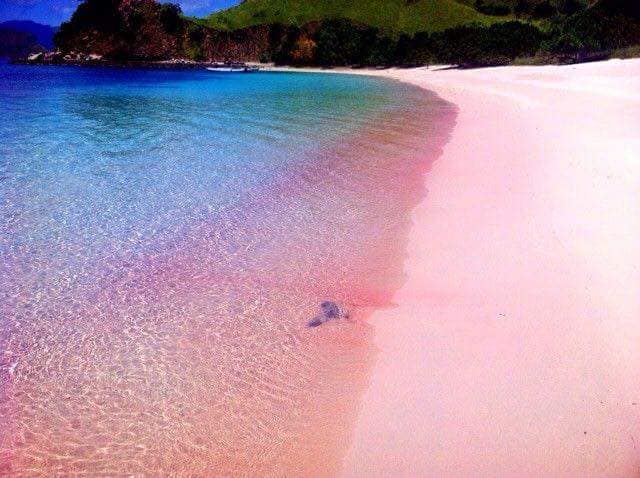
Photo source: https://www.facebook.com/4bicolanos/photos/pcb.1935481276540050/1935481256540052
To level expectations, this is not a bright pink beach.
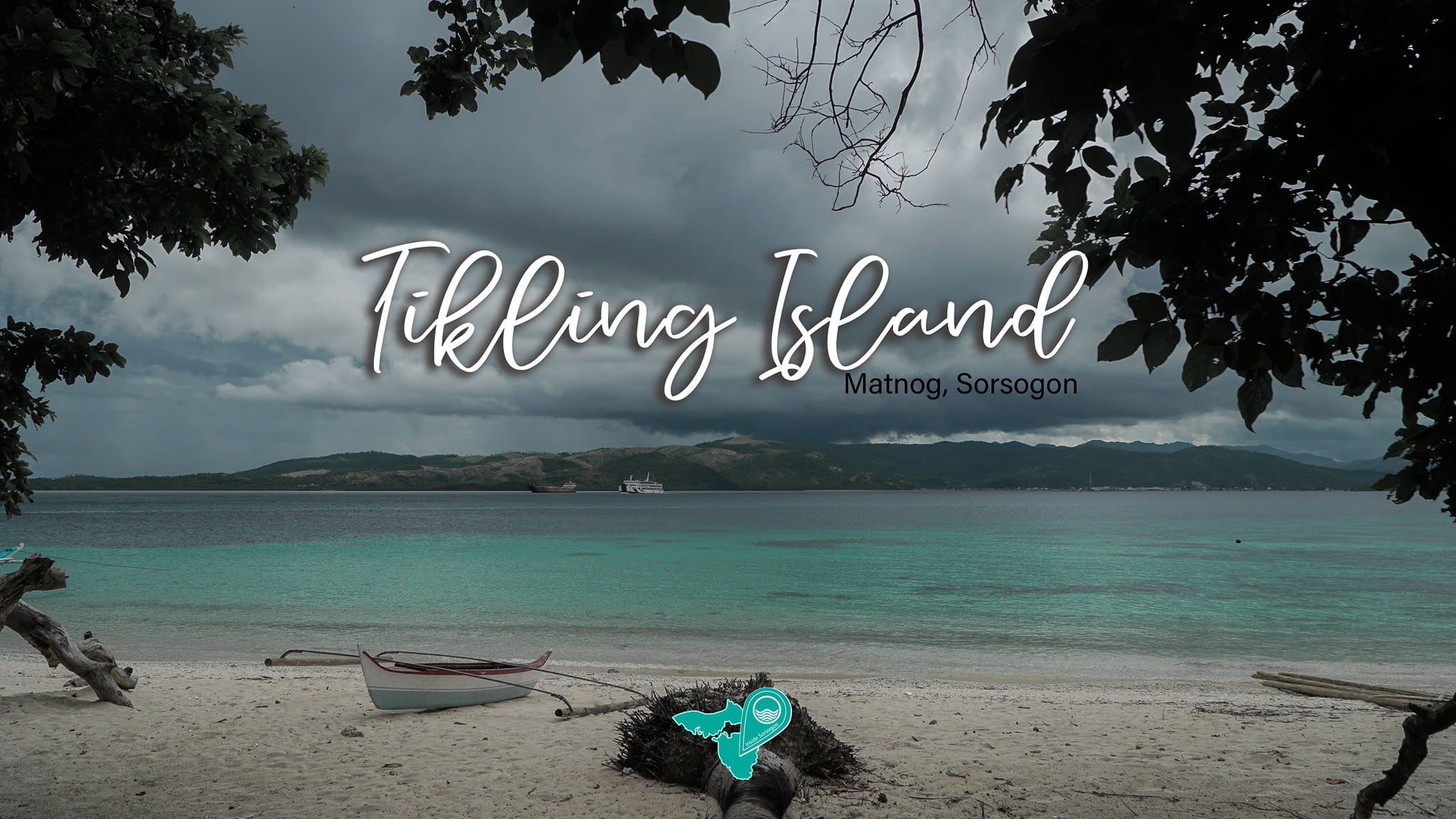
Photo source: https://www.facebook.com/InsideSorsogon/photos/pcb.775075943246232/775072509913242/
It is more like a white beach with a pink glow as you get closer, especially during midday when the sun is at its brightest. If you hold the sand in your hands, you can see the pulverized red corals with the white sand.
3. The name Tikling comes from a common species of bird that frequents the area, but shy and difficult to see. It is called the Barred Rail (Hypotaenidia torquata), found in the Philippines, Salawati (western New Guinea), and Sulawesi (Indonesia).
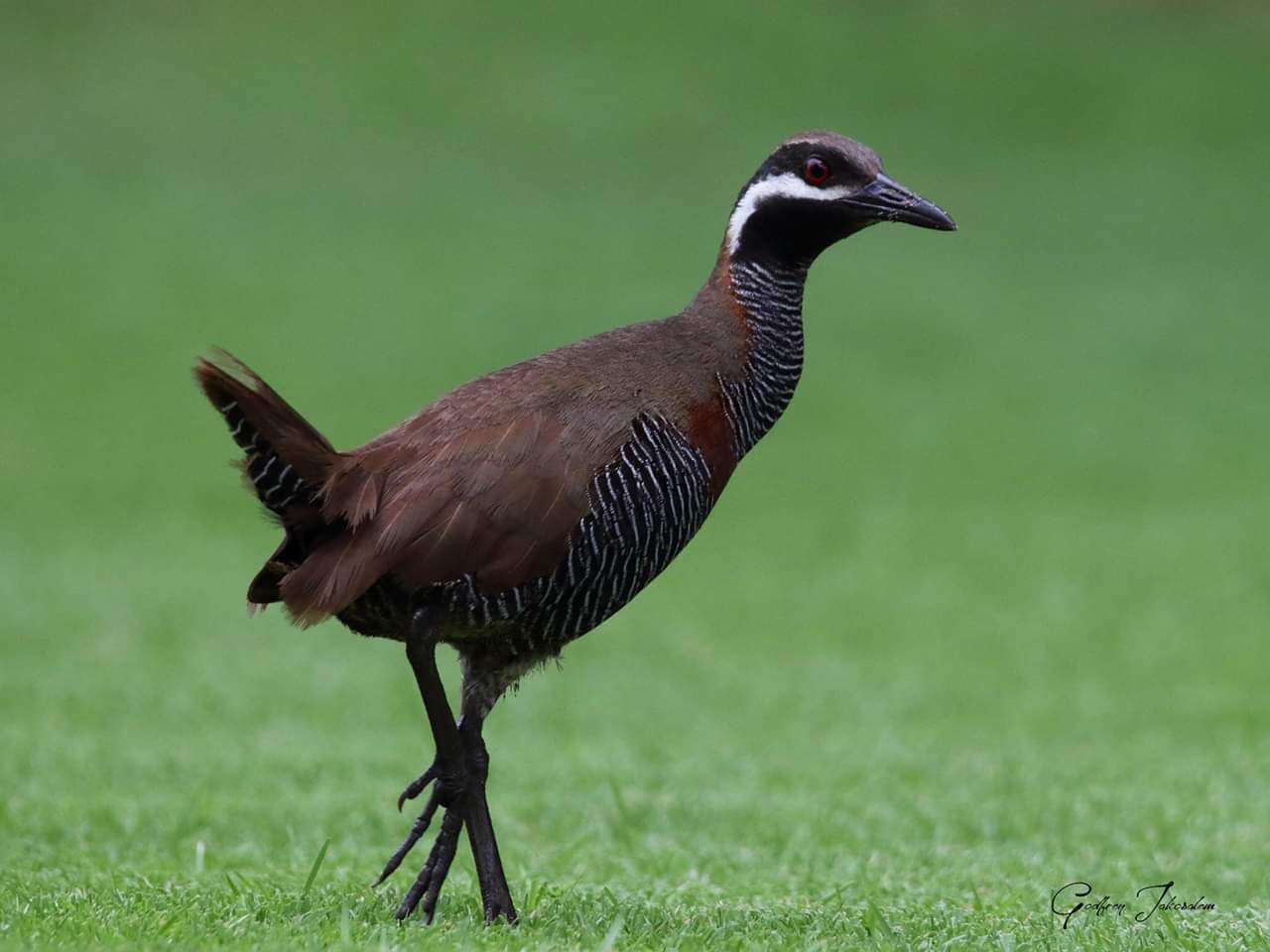
Photo source: https://www.facebook.com/philippinesbiodiversity/photos/a.972020812824345/3034593996567006/
4. The island has lush vast vegetation, filled with scattered coconut trees. There are no cottages, resorts, or tents in the island, just the native hut of the caretaker and his family, and a tree house.
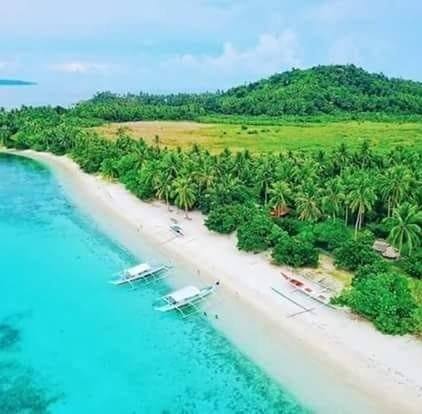
Photo source: https://www.facebook.com/106794194278473/photos/a.106794234278469/106797327611493/
5. Because this island is privately owned, only day tours are only allowed. But you know what? If you want to stay overnight, you can go to nearby Calintaan Island, with another pink beach, just less than 30 minutes away! So, in two days, you can say that you went to two pink beaches, which is really so rare.
See my post about Subic Beach: PRETTY IN PINK – 3: SUBIC BEACH (Matnog, Sorsogon, Philippines)
For DIY beach-bum couples or groups who are into camping, and have their own camping paraphernalia, they can also ask permission beforehand from the caretaker to stay overnight. Inquire about island policies, food and water, or bring your own.
If you do not want to stay in either island, you can just go back to Matnog town for accommodations.
6. There is no entrance fee for this island so if you are satisfied with your stay, you may just give a tip to the caretaker of the island.
7. What can you do in Tikling Island?
Definitely, you can swim in the clear blue waters. Heads-up for non-swimmers and children, wear vests when swimming. The water starts shallow by the shore but drops off sharply, so be careful. Snorkeling could be a problem when there are strong waves.
You can also sunbathe and take lots of pictures with the pinkish-hued white sand.
But wait, there is more! At the opposite end of the main beach are beautiful rock formations along the shore, facing the island of Samar. Just wear aqua shoes and walk through the lush vegetation.
8. You can join a Matnog island-hopping tour which costs about PHP1,800 (day tour) or PHP2,000 (for an overnight stay). The day tour is from 6AM – 5:30 PM. You get to go to:
* Subic Beach, Calintaan Island – (about 30 mins. away) – another pink beach
* Tikling Island – It is 20-30 minutes away from Matnog Port by boat, and 10 minutes from Subic Island.
* Juag Lagoon Marine Sanctuary in Juac Island (about 30 mins from the Matnog Port), owned by Alex Geneblazo. There you get to see a marine sanctuary and even swim with all the fish therein in clear waters from knee-deep to 10 ft. So, better bring your own goggles or snorkeling gear. For non-swimmers and just to be sure, you can still swim but wear your life vests.
*Calintaan Cave, about 15 mins. from Subic Island by boat. It has small cave openings amidst cliffs with green vegetation, and a flat, grassy terrain with coconut trees.
Well, while you are in Matnog2, why not consider going to other attractions in Sorsogon like Donsol whale-watching and firefly-watching tours, Paguriran Lagoon, Bulusan Volcano Natural Park with Busuan River’s kayak and paddle boats, Irosin hot springs, old church-hopping for the spiritually-inclined, waterfall-hopping (Bayugin, Namuat, Nasipit, and Palogtoc Falls), and learn to surf and enjoy the waves in Rizal beach, Gubat.
Google about these destinations and read my Sorsogon whale-watching adventure in THROWBACK – A THRILL OF A LIFETIME: SWIMMING WITH THE GENTLE GIANT – THE BUTANDING
9. How do you get to Tikling Island?
* From Manila, if you have your own vehicle, you can drive from Manila to Matnog2 for less than 9 hours, covering a distance of 596 km.
If you find that land travel is far and takes too long, you can ride a plane using Philippine Airlines or Cebu Pacific. Both fly daily to Legazpi City8. The ride takes about an hour. You can then proceed to Legazpi Central Terminal. From there, you can ride a bus or van to Sorsogon City which leaves every 15-30 minutes daily, and the ride is about 2 hrs.
By land, you can ride a (Philtranco, Amihan, Penafrancia, or Raymond) bus straight to Sorsogon City9. They leave daily, mostly from 5-10 PM, for a 12-15-hour ride, depending on traffic. Regular buses can cost less than PHP900, air-conditioned buses can cost around PHP1,300.
* From Sorsogon City, you have 4 options:
- ride a jeepney to Matnog2, costing less than PHP100, for a 1 1/2-hr ride;
- ride a bus to Bulan10, then get a van or bus to Matnog;
- rent a van for about PHP4,500, especially for a small group; or,
- arrange shuttle service, along with a Matnog tour, from a tour operator.
You can then ride a tricycle to Matnog Port.
* From Matnog Port, rent a boat to Tikling Island for a private tour (for a large group to fill up the outrigger boat) or join a group island hopping tour (since Tikling Island is part of this tour). A boat can be rented for about PHP1,500 (day tour) or PHP2,000 (overnight tour). It would be nice if you can give a tip to the boatman after your tour. If you have a vehicle, you can park in the area and just pay PHP50 for parking the whole day.
10. It is recommended that you bring the following:
* dry bag
* aqua shoes
* food, reusable water bottle filled with drinking water, and snacks for DIY island guests; Tourists usually stay longer in Subic Beach, where they eat lunch and even stay overnight. People usually buy fresh fish, seafood and other food items in the wet market in Matnog town proper and just grill/cook them in rented cottages in Subic beach. For private group tour, you can ask your tour operator about the food arrangements. If you opt to join a package group tour, better inquire about food and drinks so you can augment with snacks and additional supplies, if need be. Inform them if you have food restrictions.
* fully-charged cellphone, GoPro, cameras and power banks (in zip lock bags)
* goggles, snorkeling gear
* swimwear, change of clothes, towel, personal toiletries, natural sunscreen, hand sanitizer
* cash – there is no bank or ATM in the island
The information was obtained from
https://philippineslifestyle.com/pink-sand-beaches-in-the-philippines-to-visit-this-2020/,
https://windowseat.ph/5-extraordinary-pink-sand-beaches-in-the-philippines-you-should-visit/, https://philnews.ph/2018/12/03/pink-beaches-philippines-visit/, and
https://www.spot.ph/things-to-do/weekend-guides/73789/pink-beach-philippines-a00171-20180520-lfrm, https://www.facebook.com/philippinesbiodiversity/photos/a.972020812824345/3034593996567006/ and the Wikipedia page “Barred rail”11.
I was only able to see this island from afar after staying the whole day in nearby Subic Beach. It looked smaller, pristine with crystal clear water. Perhaps when I return to Sorsogon, I will find time to visit this island for its pinkish beach and rock formations.
Bottomline, Tikling Beach is for people who are fond of unique pinkish-white, secluded and relaxing beaches, with a chill vibe, and interesting formations. This tropical island does not offer any accommodation so if you want to stay in an island overnight, proceed to nearby Subic Island, which also has a pinkish beach.
You must be game to trek a bit past the lush vegetation to reach the interesting rock formations, just wear aqua shoes. If you are satisfied with your stay, why not give a tip to the caretaker?
This is not a sponsored post. I just want my readers to know more about the Philippines.
See posts of other pink beaches: PRETTY IN PINK – 1: GREAT SANTA CRUZ ISLAND (Zamboanga City, Philippines), PRETTY IN PINK – 2: SILA ISLAND (San Vicente, Northern Samar, Philippines), PRETTY IN PINK – 3: SUBIC BEACH (Matnog, Sorsogon, Philippines) and PRETTY-IN-PINK-5: PINK BEACH, PAROLA ISLAND (Jose Panganiban, Camarines Norte, PH)
The picture used in the cover picture was obtained from https://www.facebook.com/4bicolanos/photos/pcb.1935481276540050/1935481133206731/
Did you find this post informative? I would like to hear your comment/s regarding Tikling Beach, especially if you were able to see it.
See other interesting places through other posts in this category and other categories of SCapades, Pinoy Delights, and Smart Traveler – Now You Know, Short and Simple, and Say, Say, Say. Happy reading, and I hope that you will appreciate what I shared and some of the featured destinations will be part of your future travel plans!
Remember to share this post with your friends, follow me by clicking on the bottom right corner of your device, and do not forget to like this post. Thank you.
– – – – – – – – – – – – – – – – – – – – – – – – – –
The following terms are defined for interested readers, especially those with “Senior-Moments”, those not familiar with Filipino terms, and those too busy or lazy to Google such terms:
1A municipality is a small, single urban administrative division, or local government unit (LGU), in the Philippines which has corporate status and powers of self-government or jurisdiction as granted by law. It is a unit under a province3, subdivided into barangays12, and is locally called bayan. In the Philippines, a municipality is headed by a mayor, a vice mayor, and members of the Sangguniang Bayan (legislative branch). It can enact local policies and laws, enforce them, and govern its jurisdictions. It can enter into contracts and other transactions through its elected and appointed officials and can tax as well. It enforces all local and national laws. There are almost 1,500 municipalities in the Philippines. The information was obtained from Wikipedia page “Municipalities of the Philippines.”13
2Matnog is a municipaility1 in the province3 of Sorsogon4, Bicol5 Region6, in the Luzon7 group of islands, Philippines. It has the busiest port in the region and one of the busiest in the country, with millions of people crossing the San Bernardino Strait to Northern Samar annually. The native people of Matnog are the Agta, Tabangon and Cimaron Tribe. It was founded on May 17,1800 and has 40 barangays12. The name Matnog comes from the word matonog, meaning very audible, describing the loud sound of the waves. The information was obtained from Wikipedia page “Matnog.”14
3A province is the primary administrative and political division in the Philippines. It is the second-level administrative sub-division of a region6. There are 81 provinces (lalawigan) in the Philippines. Each province is governed by an elected legislature called the Sangguniang Panlalawigan and by an elected governor. The information was obtained from the Wikipedia page “Provinces of the Philippines.”15
See a related post: Foreign Seniors Ask: WHAT ARE PROVINCES IN THE PHILIPPINES?
4Sorsogon is a province3 located in the Bicol5 region6, in the island of Luzon7, in the Philippines, founded on October 17, 1894. It is the southernmost province in Luzon and is subdivided into 14 municipalities1 (or towns) and one city (Sorsogon City9, its capital). The people are called Sorsogueños.
It covers a total area of 2,119.01 km2 (818.15 sq.mi.). It is bordered by the province of Albay to the north, the Ticao and Burias Passes to the west and northwest, the Philippine Sea to the east, and to the south by the San Bernardino Strait. Mount Bulusan, the tallest peak, rises 1,560 m (5,120 ft) above sea level. It is interesting to know that all municipalities lie along the coast, except the landlocked municipality of Irosin.
Sorsogon is the gateway of Luzon to the Visayas16 and Mindanao17 through its Roll-on/Roll-off ferry terminal facilities located in the municipalities of Matnog, Bulan and Pilar.
For more information, visit its website: www.sorsogon.gov.ph. The information was obtained from the Wikipedia page “Sorsogon”.18
5Region V, or Bicol Region, is a Philippine region6 located in the island of Luzon7, with Legazpi City8 as its regional center and largest city. It has 6 provinces3: Albay, Camarines Norte, Camarines Sur, Catanduanes, Masbate, and Sorsogon4. It is called the “Home of the Uragons”, referring to the brave Bicolano people.
This region is bounded by the Lamon Bay to the north, the Ragay Gulf to the west, and the Philippine Sea to the east. Camarines Norte and Camarines Sur, the northernmost provinces, are bordered to the west by the province of Quezon (of another region – Calabarzon19).
The information was obtained from the Wikipedia page “Bicol Region”.20
6A region is an administrative division based on geographical, cultural and ethnological characteristics. Each region is further subdivided in provinces3, composed of cities and municipalities1 (or towns), which in turn, are divided into barangays12, formerly called barrios, according to Wikipedia page “Regions of the Philippines” 21.
See a related post: Foreign Seniors Ask: WHAT ARE THE REGIONS OF THE PHILIPPINES?
7Luzon is the largest and most populous island in the Philippines. It is ranked the 15th largest island in the world by land area, at 109,964.9 sq.km. (42,457.7 sq mi). It is the northern portion, among the three primary island groups in the Philippine archipelago, with Visayas16 at the center, and Mindanao17 at the southern part. It is the economic and political center of the country, with Manila as the capital city, and Quezon City as the country’s most populous city. It has a population of 53 million, as of 2015, representing 52.5% of the country’s total population, and the fourth most populous island in the world. The name Luzon comes from the Tagalog word lusong, a large wooden mortar used to de-husk rice. The information was obtained from the Wikipedia page “Luzon”22 .
8Legazpi City is a component city23 and capital of the province3 of Albay, Bicol5 Region6, in the Luzon7 group of islands, Philippines. It was founded in 1616, and became a city on June 12, 1959. It has 70 barangays12. It was named after Miguel Lopez de Legazpi24, a Spanish conquistador25 who went to the Philippines in 1565.
It is called the:
* Queen City of Southern Luzon – This city is the regional center of tourism, education, health services, commerce and transportation. It is largest city of the region, in terms of population.
* Gateway City of Bicol and the Gateway of Southern Luzon – This city is the gateway to many attractions and destinations of the region. e.g., Donsol’s whale sharks, Naga’s wakeboarding, and the pink beaches of Matnog.
* City of Fun and Adventure – There are a number of adventure tourism activities within the city, e.g., riding an All-Terrain Vehicle around Mayon Volcano, scuba diving, skydiving, zip-lining, water sports, old churches and ruins, underground river and caves, parks, tunnels, and spicy food and local delicacies.
Visit its website: www.legazpi.gov.ph. The information was obtained from https://philippinescities.com/legazpi-city/ and the Wikipedia page “Legazpi, Albay” .26
9Sorsogon City is a city and capital of the province3 of Sorsogon4, in the Bicol5 region6, in the island of Luzon7, Philippines. It is the only city in the province and was established as a component city23 created by virtue of Republic Act No. 8806, enacted on August 16, 2000, and ratified on December 16, 2000, from the merger of Bacon and Sorsogon municipalities1, with a total of 64 barangays12.
It is called the “Gateway to Southern Philippines” because it serves as a trans-shipment point from the provinces of the islands of Visayas16 and Mindanao17. It covers a land area of 31,292 hectares (120.82 sq.mi.). This city is bounded by the Albay Gulf in the north, the municipality of Manito (of the province of Albay) in the northwest, and the Sorsogon municipalities of Castilla in the west, Casiguran in the southwest, Prieto Diaz in the east, Gubat in the southeast, and Sorsogon Bay in the south.
The information was obtained from the Wikipedia page “Sorsogon City”.27
10Bulan is a municipality1 in the province3 of Sorsogon4, in the Bicol5 region6, in the island of Luzon7, Philippines. It is located at the south-westernmost tip of the Bicol Peninsula. It has a total land area of 196.96 km2 (76.05 sq mi). It is bounded on the north by the municipality of Magallanes, on the west by Ticao Pass, on the east by the municipalities of Juban and Irsosin, and on the south by the municipality of Matnog. It is the 2nd most populated municipality in the province. It has 63 barangays12. Visit its website: www.bulan.gov.ph. The information was obtained from the Wikipedia page “Bulan, Sorsogon”.28
11“Barred rail,” accessed March 29, 2020, https://en.wikipedia.org/wiki/Barred_rail
12A barangay in the Philippines is the smallest administrative division in the Philippines, headed by a barangay captain, aided by a Sangguniang Barangay (Barangay Council). It is the native Filipino term for a village. It was formerly called a barrio. In a metropolitan area, a barangay is an inner city neighborhood, a suburb, or a suburban neighborhood. The word barangay originated from the term balangay, a kind of boat used by a group of Austronesian people who migrated to the Philippines. A number of barangays grouped together is called a district. The information was obtained from Wikipedia page “Barangay.”29
13“Municipalities of the Philippines,” accessed January 29, 2019, https://en.wikipedia.org/wiki/Municipalities_of_the_Philippines
14“Matnog,” accessed March 29, 2020, https://en.wikipedia.org/wiki/Matnog
15“Provinces of the Philippines,” accessed May 29, 2019, https://en.wikipedia.org/wiki/Provinces_of_the-Philippines
16Visayas is one of the 3 major geographical divisions of the Philippines. It covers 3 administrative regions: Central Visayas, Eastern Visayas and Western Visayas. It consists of 6 major islands (Bohol, Cebu, Leyte, Negros, Panay and Samar) mostly surrounded by the Visayan Sea, and is composed of 16 provinces3, according to Wikipedia page “Visayas”.30 The 2 other geographical divisions of the Philippines are Luzon7 (the northern part) and Mindanao17 (the southern part).
17Mindanao is one of the 3 major geographical divisions of the Philippines. It is the second largest island of the country and covers 6 administrative regions6: Caraga, Davao, Northern Mindanao, SOCCSKSARGEN, Zamboanga Peninsula, and the Bangsamoro Autonomous Region in Muslim Mindanao (BARMM). It is composed of 22 provinces3 and 33 cities (27 provinces and 33 cities, if associated islands are included). The information was obtained from Wikipedia page “Mindanao.”31 Mindanao is located in the southern part of the country; the 2 other geographical divisions of the Philippines are Luzon7 (in the northern part) and Visayas16 (the middle part).
18“Sorsogon,” accessed March 29, 2020, https://en.wikipedia.org/wiki/Sorsogon
19Calabarzon, or Region IV-A, or Southern Tagalog Mainland, is a Philippine region6 located in the island group of Luzon7, with Calamba as its regional center. Calabarzon is an acronym for this region’s five provinces3: CAvite, LAguna, BAtangas, Rizal, QueZON. It is the most populated region in the country and the country’s second most densely populated region, after Metro Manila. This region is located south of the National Capital Region (NCR), bordered by the provinces of Aurora, Bulacan and Metro Manila in the north, Manila Bay in the west, Tayabas Bay, and Sibuyan Sea in the south, and Lamon Bay, and the Bicol5 Region in the east. The information was obtained from the Wikipedia page “Calabarzon”32 and https://lga.gov.ph/region/region-iv-a.
20“Bicol Region,” accessed March 29, 2020, https://en.wikipedia.org/wiki/Bicol_Region
21“Regions of the Philippines,” accessed July 17, 2018, https://en.wikipedia.org/wiki/Regions_of_the_Philippines
22“Luzon,” accessed April 2, 2018, https://en.wikipedia.org/wiki/Luzon
23A component city is a type of city in the Philippines which does not meet the requirements of a highly urbanized city33. It is under the jurisdiction of a province3. If such a city is located along the boundaries of 2 or more provinces, it shall be considered part of the province of which it used to be a municipality1. The information was obtained from Wikipedia page “Cities of the Philippines.”34
24Miguel Lopez de Legazpi (1502 – 1572), also known as El Adelantado and El Viejo (The Elder), was a Spanish navigator and governor who established the first Spanish settlement in the East Indies when his expedition crossed the Pacific Ocean from the Viceroyalty of New Spain in modern-day Mexico. He was the first Governor-General of the Spanish East Indies which was governed and mainly located in the Philippines, and encompassed other Pacific islands like Guam and the Mariana Islands. He passed away on August 20,1572 in Intramuros, and was laid to rest in the San Agustin Church, also in Intramuros, Manila. The information was obtained from the Wikipedia page “Miguel Lopez de Legazpi.”35
25A conquistador was a knight, soldier and explorer of the Spanish and Portuguese Empires during the Age of Discovery or Exploration, from the 15th – 18th centuries.
Conquistador is the Spanish and Portuguese term for “conqueror”. He sailed from Europe to the Americas, Oceania, Africa and Asia, conquered territory and opened trade routes. The information was obtained from the Wikipedia page “Conquistador”.36
26“Legazpi, Albay,” accessed March 29, 2020, https://en.wikipedia.org/wiki/Legazpi,_Albay
27“Sorsogon City,” accessed March 29, 2020, https://en.wikipedia.org/wiki/Sorsogon_City
28“Bulan, Sorsogon,” accessed March 29, 2020, https://en.wikipedia.org/wiki/Bulan,_Sorsogon
29“Barangay,” accessed December 30, 2018, https://en.m.wikipedia.org/wiki/Barangay
30“Visayas,” accessed April 2, 2018, https://en.wikipedia.org/wiki/Visayas
31“Mindanao,” accessed April 2, 2018, https://en.wikipedia.org/wiki/Mindanao
32“Calabarzon,” accessed February 20, 2020, https://en.wikipedia.org/wiki/Calabarzon
33A highly urbanized city is a type of city in the Philippines with a minimum population of 200,000 as certified by the Philippine Statistics Authority (PSA), and with the latest annual income of at least 50 million pesos. There are currently 33 such cities in the Philippines. The information was obtained from the Wikipedia page “Cities of the Philippines.”34
See a related post: Foreign Seniors Ask: HOW MANY CITIES ARE THERE IN THE PHILIPPINES?
34“Cities of the Philippines,” accessed March 17, 2018, https://en.wikipedia.org/wiki/Cities_of_the_Philippines
35“Miguel Lopez de Lagazpi,” accessed March 29, 2020, https://en.wikipedia.org/wiki/Miguel_Lopez_de_Legazpi
36“Conquistador,” accessed March 29, 2020, https://en.wikipedia.org/wiki/Conquistador


4 thoughts on “PRETTY IN PINK – 4: TIKLING BEACH (Matnog, Sorsogon, Philippines)”